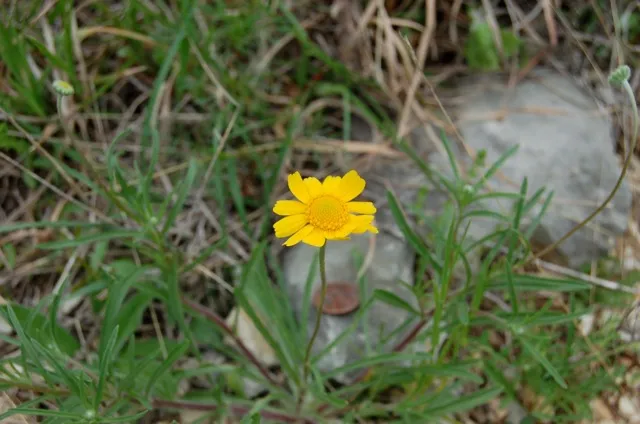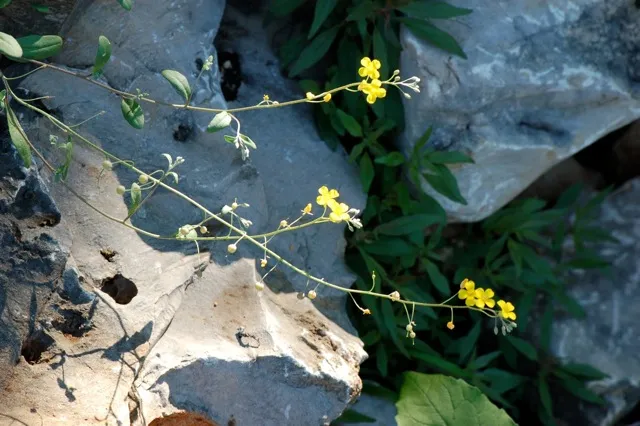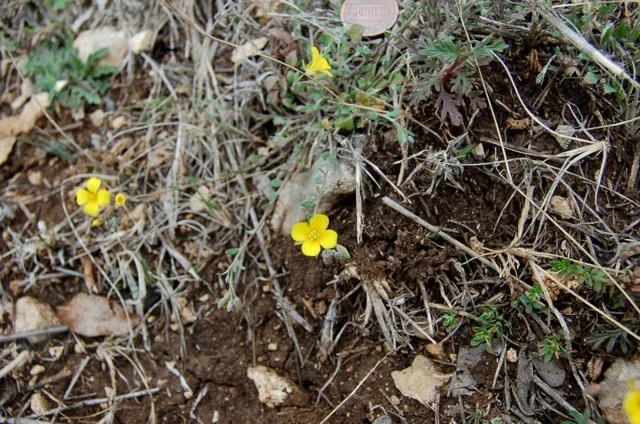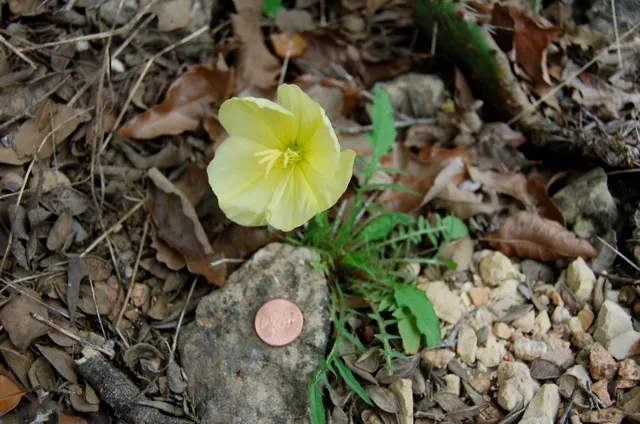By Delmar Cain
Green and yellow on the roadsides and in the fields tell us that spring is upon us. Each tree species has its own shade of green that seems to differ from every other species. Just like the colors in the fall, the fresh new leaves of spring give us an indication that some diversity is present, even with the loss of many hackberry trees and Spanish oaks.

The browns and dark tans of the fallen leaves and dead grasses of winter are gradually being replaced by the new growth of grasses and the young growth of what will be, assuming even a small amount of rainfall, our spring wildflowers. Some of the hardier plants are not waiting for additional rain. Among those plants yellow seems to be the preferred color.
In a dry year a perennial plant that normally occupies dry calcareous soils is not hindered by the lack of rain. The slender-stem bitterweed (Hymenoxys scaposa) that can be seen blooming along the roadsides and on the caliche banks has returned for another year.
The green leafy part of the plant is less than 6 inches tall. But it sends up a stalk, which may be up to 15 inches in height with a single yellow flower head, which is 3/4-1 1/4 inches across. The leaves of the plant and the stem are covered with fine, soft hairs. Slender-stem bitterweed, sometimes referred to in the nursery trade as four-nerve daisy, will bloom through the summer and into the fall.

Another less conspicuous yellow early arriver is the silver bladderpod, (Lesquerella argyraea). It is a small plant with yellow flowers 1/4 to 3/4 inch wide. This year expect to see the1/4 inch flower. Although the plant may grow up to a foot tall, the ones that I am seeing are only 3 or 4 inches tall. It has several spreading but usually reclining stems.
The leaves are long and narrow, but widen near the tip. Both the leaves and the stems are covered with tiny hairs, giving it its silver appearance. The plant is native only to Texas and is found mainly in the southwestern part of the state, excluding far West Texas.
Bladderpods, of which there are many, are members of the Mustard family (Brassicaceae). The inflated seedpod of the plant is the origin of the common name. In recent years some of the other plants in the genus Lesquerella have been used as a source for bladderpod oil, which is extracted from the seeds. The oil contains hydroxy acids, a raw material used in the manufacture of plastics, waxes, coatings and even cosmetics.

Another yellow flowered plant is also making its early appearance with some individuals blooming as early as February. But your timing has to be more precise to see the stemless evening primrose (Oenothera triloba), which opens in the evening, sometimes near dark. This showy pale yellow flower can be up to 2 inches across, with four large petals. It rises from the center of a rosette on a floral tube 1-3 inches in height. The individual flower will be gone by noon the next day, although the plant may continue to send up blooms until May.
All associated with the Cibolo Nature Center lost a good friend with the death of Georgia Galey on March 19th. As the volunteer coordinator at the CNC, Georgia touched each organization in her own special way. And her special way, which made her perfect for the job, was with patience, understanding and a desire to make each occasion happen as smoothly as possible.

For several years Kip Kiphart, with expert help from Patty Leslie Pasztor, has provided an exhibit on monarch butterflies and nectar producing plants at the Mostly Native Plant Sale. Two years ago when Kip encountered some problems in getting the appropriate plants for the exhibit, Georgia came to the rescue. She arranged for a donation of the plants by a nursery. After the sale the plants were donated for local school and other public projects. Kip, with an endorsement by the Boerne Chapter of NPSOT, has decided to name the butterfly garden at the plant sale, The Georgia Galey Butterfly Garden. The CNC will use the whole butterfly garden as one of its auction items. Be sure and look for it at the Mostly Native Plant Sale on April 5th and 6th.
Like the stemless evening primrose, Goergia Galey’s time with us was far too brief. You can attend a memorial service for her at the CNC at 3:00 PM on April 7, 2013.


